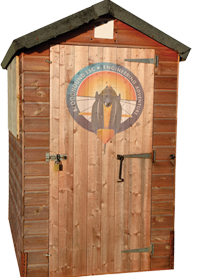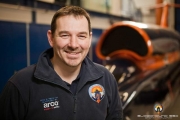You may feel that the title of this column is a little misleading — surely every design you produce should be perfect? Not so says Dan Johns, a Senior Engineer on the Bloodhound Project…
 Design is a process that finds the answer or answers to a problem. It is a process of experimentation and optimisation — if it was simply sitting down with a pencil and paper and sketching out the foregone conclusions everyone would be a designer and every design would be 100% right first time!
Design is a process that finds the answer or answers to a problem. It is a process of experimentation and optimisation — if it was simply sitting down with a pencil and paper and sketching out the foregone conclusions everyone would be a designer and every design would be 100% right first time!
The first step in the process is to lay down some rough boundaries to form the ‘design space’. This is the area in which you believe the answer should lie but contains space for all the combinations and permutations of variables you have to consider in order to converge on a solution. If you have made a good educated guess, this space should also contain your 100% answer, but we’re not looking for that. We are only looking for a viable solution, of which there can be many.
As Albert Einstein once said, splitting the atom by bombardment is as hard to achieve as “shooting birds in the dark in place where there are only a few birds.” By creating your design space you’re at least giving yourself some light (even if only a faint glow). A good example of how this process works can be seen in Archimedes’ approximation of Pi. Archimedes used the so-called ‘Squeeze Theorem’ using an iterative process to refine a best guess (the boundary). He got to within 99.9% accuracy with 96 refinements.
With the Bloodhound car we had very few points of reference as no one had ever designed a 1000 mph+ car, but we did have the data from the Thrust SSC — the current Land Speed Record holder at 763 mph over 1 mile. Using this, the design team could take the first best guess known as Concept 1 (Main image). By applying the squeeze theorem the boundary conditions are refined, leading to a smaller design space within which the answer still lies — Concept 2.
By using this iterative refinement technique we make significant leaps towards the answer to the problem quickly, like the Pareto Principle for design. The Pareto Principle (also known as the 80–20 rule) states that approximately 80% of the effects come from just 20% of the causes. In practice this means a design team may use just 20% of its time and resources to create a concept that is 80% of the final answer, but could then spend 80% of its time getting to the final answer.
And all of this can be achieved through the application of common sense, engineering know-how and hard work. If we look at how design has progressed in Bloodhound’s closest neighbour, aviation, we can see that from the Wright brother’s first flight to the 1949 de Havilland Comet enormous engineering and technical feats were achieved without the use of computers. No CAD, CFD or FEA. The DH Comet however looks, for all intents and purposes, like a modern jet liner. Indeed the Comet was in use right up until 1997!.
The fact of the matter is that by using the rules of convergence, iterative refinement and continuing to optimise more objectives with more constraints to refine the configuration, the designers of the Comet found the configuration of the jet liner to such a degree that the following decades of computing power have merely refined the initial concept towards the 100% mark. The first ~50 years of aviation defined the shape of the modern airliner; the last 50 years have merely refined it (albeit against an ever increasing set of function objectives).
By recognising that 99% is good enough for a design to fly (or very much not fly in the case of Bloodhound SSC!) we can get to a solution more quickly and efficiently than trying to create perfection. Like Salvador Dali remarked: “Have no fear of perfection — you’ll never reach it.”


